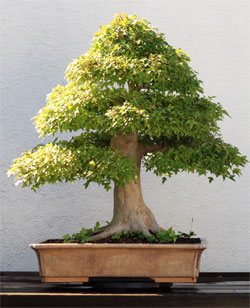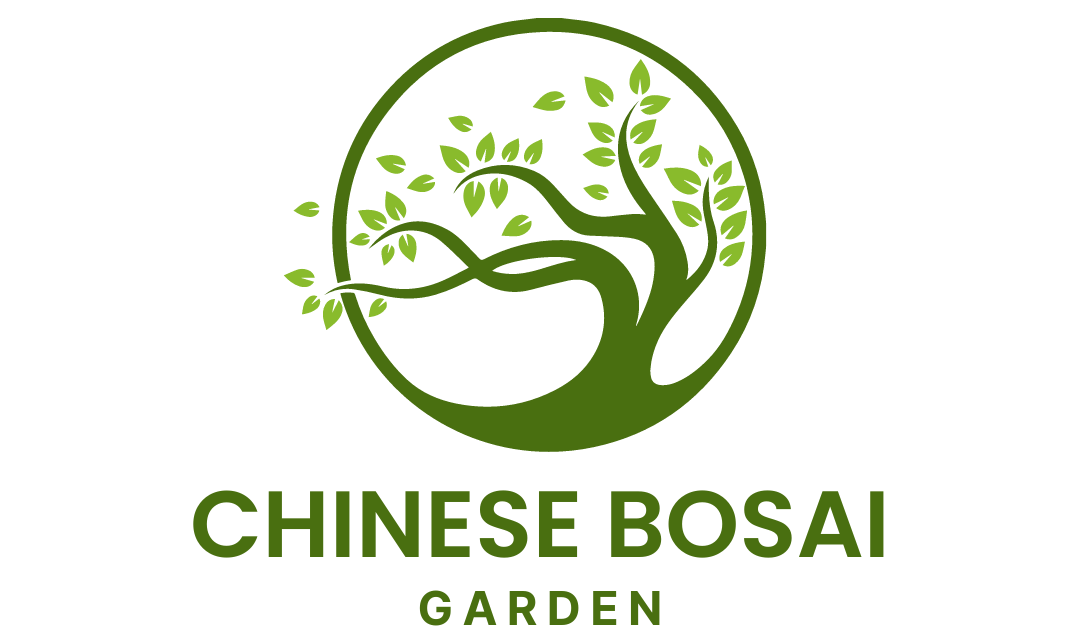
Bonsai trees like regular trees need water to survive. Most of the beginners run into a problem of overwatering or underwatering the tree.
Don’t feel bad. We all have done it. We all killed a few trees before getting it right. Watering bonsai the RIGHT way takes time and practice.
Regular trees in the natural environment can adjust and regulate their water intake by growing more or less roots.
If there is not enough water, trees will extend their roots far into the ground searching for moisture. As a result, trees that grow in drier climates have larger root systems.
If the tree grows in a wet climate where there is a lot of moisture available, it doesn’t need long roots to get enough water. Those trees usually have a shallow root system. Bonsai plants need considerably less water proportional to their size.
Since bonsai grows in a small shallow pot with a little compost, it doesn’t have the ability to adjust or regulate water intake. Also, because there is not much soil in the pot, it dries out quicker and is greatly affected by the surroundings, like humidity levels, temperatures, season, location (outdoors/indoors), and so on.
Overwatering
Overwatering bonsai can lead to root rot. Root rot develops when the soil is not draining fast enough and the plant is sitting in water. One of the first symptoms is the wilting of the leaves and loss of vigor. Too much water prevents roots from getting enough oxygen and eventually, they will suffocate and die.
At the same time, roots start to rot spreading root-rotting bacteria throughout the root system. As the roots die back, the tree gets less and less water. Unfortunately, it might take a while before there are signs of overwatering. By that time it might be too late to save the tree.
Once you see the foliage start to yellow or wilt, check the soil to make sure it is dry before watering. If you discover a lot of moisture, give the soil more time to dry. Don’t water it. If you have discovered rotted roots during repotting, trim them off and make sure to use good quality draining compost.
If your bonsai is growing outdoors (like it should be), you are probably wondering what effect does periods of continual rain can have on the roots. If the tree is healthy, it should be fine.
Short periods of overwatering should NOT cause any problems. It is chronic overwatering that can negatively affect the tree. All of my trees are growing outdoors and I never had this problem.
Underwatering
Plants need water to distribute vital nutrients to their system. Soil needs to be moist and well drained. NEVER let the soil dry out completely. Some plants, that prefer moist conditions in the wild, can die after just one day without enough water. If the soil becomes too dry, it is hard for the water to penetrate through.
Some of the signs of underwatering are drying tips of the leaves or drooping leaves. Leaves are usually affected first and then branches, trunks, and roots start to collapse.
If your bonsai has accidentally dried out completely you can try saving it by placing a container in a shallow basin of water. Leave it in for about half an hour. Remove the pot and stand it with one end raised to drain excess water.
The next step is to cover your bonsai with see-through plastic without touching the branches of the tree. This will create a little bonsai greenhouse. It might take from a few days to several months for the plant to recover.
How often should I water
As each plant has different water requirements, it is impossible to give a specific water amount. Instead, you need to understand the basics. Water plants ONLY when the soil gets slightly dry.
If you water them on a daily routine, they will end up sitting in water. Before watering, check the soil with your fingers or chopsticks to see how dry it is. The top 0.5” of the soil should start to dry out before you water. If you pull out a chopstick and it is almost dry, you can water it.
Observe each tree individually rather than watering the whole collection. Some trees need daily watering others might need to be watered twice a day. There are a lot of factors like time of the year, soil mix, or weather that affect the watering schedule.
The important thing to remember is that compost needs to DRY a little between waterings. Some bonsai enthusiasts can tell the dryness by lifting a pot.
If you know how much the tree weighs when it’s dry and wet, you will be able to tell the difference. Of course, this method requires some experience and you can do it only with small trees. You are not going to lift a 5-gallon tree to check the dryness.
Another way to tell is by the color of the soil. Once you spend enough time observing your trees, you will see how dry the soil is by looking at its surface. Following these simple rules will prevent you from overwatering your trees.
When should I water
You’ve probably heard that the best time for watering is in the evening. In my opinion, you can water your tree at any time. Is one time of the day better than the other? Not really.
If you need to go to work and you know that some of the trees might dry out during the day, water them in the morning before leaving. That way, they will be well-watered before the heat starts.
If the summer is very hot, it is OK to water your bonsai more than once a day. Avoid getting water on the foliage since the sun may cause water droplets to act as a lens and burn bonsai leaves.
That being said, there is NO reason to wait till the evening to water your plant. Water them as soon as they start to dry out.
How should I water
The goal is to soak the soil throughout so the ENTIRE root system is wetted. Water the soil till it reaches the rim of the container. Then wait and see if the water is coming out through the holes in the base of the container.
Wait for 5 minutes and repeat the process again. Since bonsai sits in a shallow container with very little soil, you need to make sure it is watered THOROUGHLY.
Flowing water forces stale air out of the soil and draws in fresh oxygen as the water moves from the top to the bottom of the pot. Always water bonsai with fine rose to prevent damaging the delicate leaves or washing away compost in newly potted or repotted containers.
While the best water for bonsai is rainwater or well water, tap water should work just fine. Many indoor bonsai, especially tropical ones, like to be misty because the air in the room can get very dry. Mist them with clean water using a fine mist.
Watering bonsai while on vacation
If there is no one to care for your bonsai while you are on vacation, consider finding a bonsai nursery that offers vacation care service. A lot of them have very reasonable prices.
Unlike your friends and neighbors, bonsai experts know how to keep your bonsai alive and healthy while you are on vacation. Alternatively, you can bury the pots in a moist, shady spot covering the surface of the soil by ½ inch of earth. This should keep the pots moist for a week or two.
Another way to prevent the soil from drying out completely, while you are away, is to use capillary matting. Capillary matting usually is used in greenhouses to water plants. Cut out a piece of matting to fit at the bottom of your pot.
Also, cut out 1-inch wide strips and insert one through each drainage hole in the base of the container. The ends of the strips should be placed in the water so they will slowly absorb water and get it into the pot.
Other IMPORTANT factors
As previously mentioned, there are several factors that affect the dryness of the soil including the size of the pot, the size of the tree, the soil mix, time of the year, and weather conditions. I know this post is getting very long, but still want to quickly go over some of these factors since I think they are important to mention.
Soil type will determine how well it absorbs and holds water. You want a perfect mix of components that are able to absorb water well, but at the same time have a good drainage. If the soil holds too much water, it will lead to root rot.
Fast-growing plants tend to develop roots faster and therefore, require shorter watering intervals and more water. Use larger pots with more amount of soil for this kind of plant. More soil means longer drying time.
As you all know, high temperatures and sunlight will decrease drying time by a lot. Even without sun, with temperatures above 80F, most of the bonsai will need to be watered daily. Of course, with high humidity, the drying time will increase.
Wind can also be a factor. Strong winds can very quickly dry out a plant decreasing watering interval. Surely climate trees require more water during the growing season when the temperatures are warmer than in the winter when it is cooler and the growth rate slows down.
Related articles:
